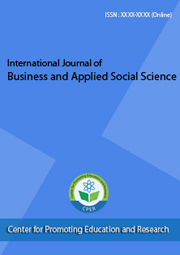current
Table of Contents
Articles
Author(s): Assoc. Dr. Burhan DOĞAN; Res. Asst. Ezgi DOĞAN
Abstract:
In this study, behavioral economics and as one of the research topics of this new field, what altruism is, its types, psychological or environmental reasons, the contradictions of rational human and altruism, one of the basic assumptions of economics, were examined. A survey form was created to obtain data during the research process. While the distribution and variability criteria were used in the interpretation of the findings obtained from the research, Microsoft Excel and SPSS programs were used in the analysis and arrangement of the data. When the data is evaluated, individuals move away from rational behaviors due to the element of altruism, and limited rationality emerges. While the individual tries to be rational in many aspects; Due to empathy, happiness, ethical norms, and religious values, they may move away from rationality depending on the development of altruism. Therefore, based on this study, we can assume that individuals exhibit limited rational behaviors. Transferring the science of economics with the theoretical background from a mathematical point of view makes it difficult to be applicable, observable, and interpretable in real life. It will not be sufficient and correct to evaluate economics, which is not a new science, with rational choices and models only within the framework of the neoclassical economics approach. For economics, both mathematical methods and psychology should be means, not aim. Behavioral economics, which has become very popular in recent years, examines the common denominator of human economic preferences, decision-making processes, and the basic assumption of neoclassical economics, how rational people can be in real life, with the combination of economics and psychology.






